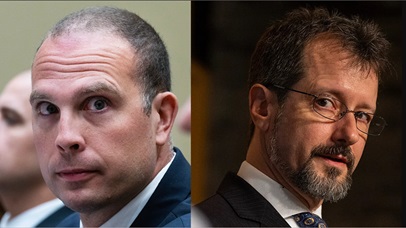
In the world of defense and security, controversies often unfold behind the scenes, shaping the narratives that govern our understanding of complex issues. The recent upheaval within the All-domain Anomaly Resolution Office (AARO) involving Director Dr. Sean Kirkpatrick and whistleblower David Grusch has sent shockwaves through the defense community.
The AARO Controversy: At the heart of the controversy is the tension between Dr. Sean Kirkpatrick, the director of AARO, and whistleblower David Grusch. Grusch alleges that AARO has been systematically suppressing information related to Unidentified Aerial Phenomena (UAP). Grusch also maintains that, while assigned to the UAP task force, he had discussed his concerns with Dr. Kirkpatrick, and Kirkpatrick never followed up. Dr. Kirkpatrick claims they have tried reaching out to Grusch, which Grusch says is a flat-out lie, and that Dr. Kirkpatrick has not reached out to him. All of this sparks a debate on the balance between national security concerns and the public’s right to know.
Whistleblower Allegations: David Grusch claims that the DOD possesses comprehensive data on UAP encounters, operates Crash Retrieval Programs, and possesses UAP craft, including non-human intelligence biologics. He also believes that the organization AARO has not been forthcoming with critical information that could reshape our understanding of these phenomena. Grusch’s assertions have fueled much speculation about the extent of the government’s knowledge of UAP and the potential risks associated with nondisclosure.
Kirkpatrick’s Resignation: In a surprising turn of events, Dr. Sean Kirkpatrick recently tendered his resignation as the director of AARO. The announcement has sparked further speculation about the internal strife within the organization and the implications for AARO’s future. Kirkpatrick’s departure comes at a critical juncture, leaving many to ponder the potential influence of the controversy on the organization’s mission and public perception.
Charting the Future: As AARO navigates this tumultuous period, questions abound regarding the organization’s commitment to transparency, the resolution of internal disputes, the continuity of its mission and most of all who will be the next Director of AARO. Will the next Director be more transparent or just another pawn in the Govts efforts to mage secrecy. The controversy underscores the challenges inherent in seeking full UAP disclosure from the DOD and highlights the DODs continuing use of national security imperatives to hide the truth.
Conclusion: The AARO controversy involving Dr. Sean Kirkpatrick and David Grusch is a vivid reminder of the intricate dynamics within defense and security organizations. As the dust settles from Kirkpatrick’s resignation, the path forward for AARO remains uncertain. Balancing the need for national security with the public’s demand for transparency will likely continue to shape the discourse surrounding AARO.